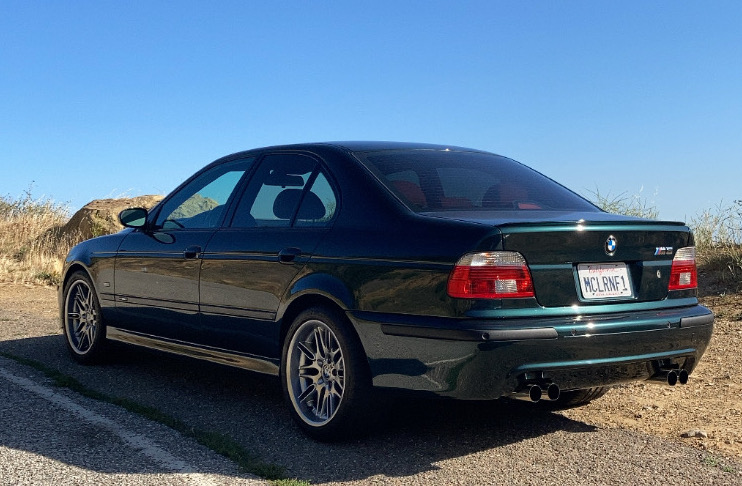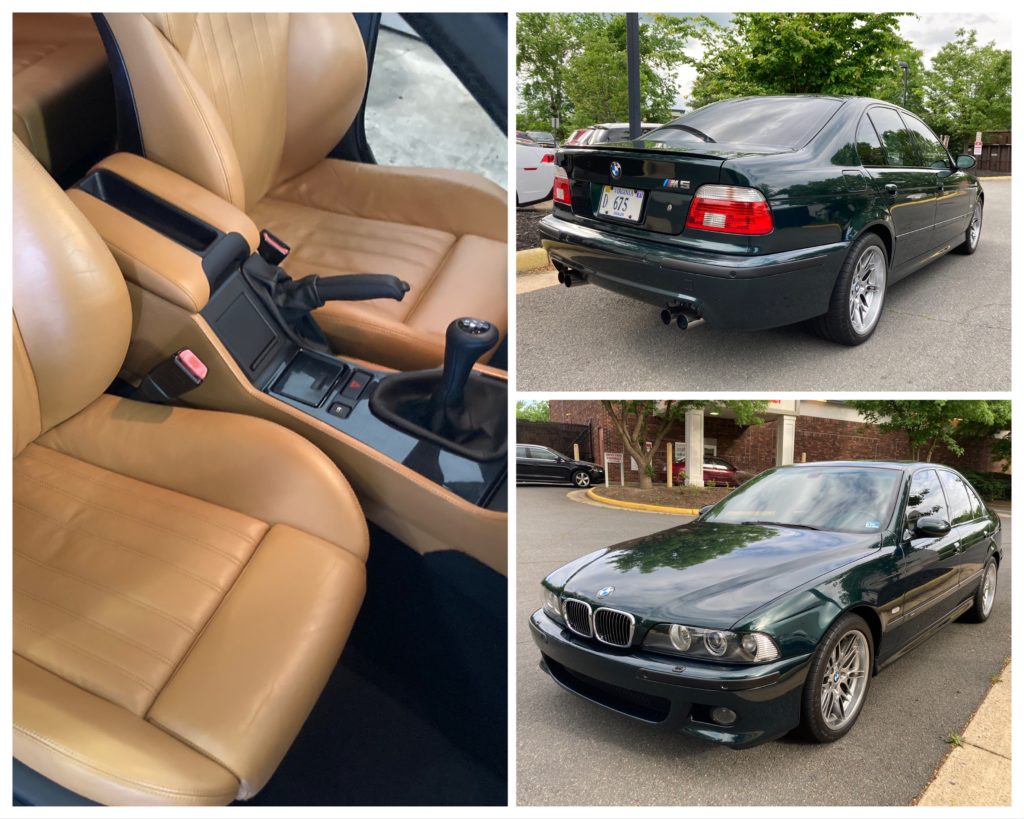Several weeks ago, while packing my 1979 7 Series for a cross-country move, I got a text from a friend. He’d found an Oxford Green over Caramel E39 M5 coming to market, and was wondering if I wouldn’t mind checking it out.
At the time, I was at the impetus of a relocation from South Carolina to Vermont, and this M5 was outside of Washington DC; I would be driving right by the next day. It was the perfect chance to get another set of eyes on the car, but I stressed that I wasn’t an expert in the S62, or the M5 specifically.
“That’s fine,” he replied. “I just want to know whether the owner is as thorough as he sounds.”
Many of us are predisposed to look for deals. With access to national auto classifieds and nothing but time for the past few months, I think it’s safe to say we all think we can spot a deal. Usually, it’s a car that’s priced low with a couple “minor needs,” or a vehicle with no history selling for half of its potential auction value. But how good will this car really be to you? Is it the right car, or is it a four-wheeled concession to real automotive values?
I spent a couple hours mulling this over as I made my way north to Washington D.C., sharing the occasional call with the California-based buyer as he pored over photos of the E39. Gradually, we formed a list of items to look for on, in, and under the Oxford M5, including everything from fuel door bubbling, to cold-start behavior, to underside leaks, and panel alignment. All were fair demands for a car at this price point, especially after taking into account The necessity of cross-country delivery.
But I had my own doubts about my E39 expertise. I’d actually owned two E39s: one 2002 530i, and another 2001 530i. The former a fully-optioned, Topaz Blue manual; the latter, a Boston Green automatic. Both had been abused prior to my ownership, as my repair bills can confirm. They were “deals” to purchase, but they were also unmitigated disasters to own.
Years had passed since I owned these cars, but doubts lingered. Would my knowledge of the E39 be enough to spare my friend the same ordeal, if for some reason the M5 was not as clean as advertised? But more importantly, if it was a good car, how would I really know?

Waiting for the right color combination can be very worthwhile.
The drive went on, and my friend relayed more information about the M5. Parts that came with it, explanations on why the seller chose to replace items, details on the car that seemed to make it even more perfect. The process became less of a car sale, and more of back-and-forth on what the buyer and seller appreciated about the E39 M5. From The minutia of kick plates and trunk lining color, to maintenance and driving dynamics, the conversation relayed to me sounded familiar—it was the discussion we’ve all had on a Saturday morning at a cars and coffee, between two stewards of an iconic sport sedan.
The initial read of genuine enthusiasm was validated as soon as I pulled in, and the M5’s owner—who shared an approximate age and background with myself and the California-based buyer—took immediate interest in my old E23. It was as telling and genuine an enthusiast reaction as one could have.

Scientific shots of the M5 during inspection.
The best client interviews tend to be discussions, rather than interrogations; I would argue the same is true buying a car. In the best of sales, the experience should be a discussion on whether the seller was the right caretaker—and whether the buyer will be, too.
As we poked under around under the M5 and I snapped photo after photo, we discussed the tough parts of the history. It had seen paintwork, but the result had to meet the owner’s standards. The car also had a muffler delete—but the tail section had been expertly welded, and painted over, and the remainder of the exhaust appeared untroubled by corrosion. Even the heat shielding and underbody panels were clean. The bushings and linkage were excellent, and—as the E39 nerds among us are no doubt wondering—the pixels on the cluster and dashboard were impeccable. It sailed up to speed beautifully on the highway, confident and accommodating, as an M5 should be. Anything that was a question mark on paper, was eased by the thought, intention, and ownership philosophy of the seller. The anxiety melted away, leaving behind one of the greatest BMWs ever built.
So, how does value come into play? This M5 wasn’t a concours car (although, truth be told, it could be with minimal work) but it was more than a driver. There were no “meant-to-do” items, no quirks, no faults—but that came at a premium.
And having witnessed the process, it’s a premium I’d pay in a heartbeat. I still remember my sleepless nights, knowing I had thousands of dollars in repairs waiting for me on my old E39s. If I had paid those thousands at the beginning, to buy the right example, they would have stood out in my memory as very different cars. Everything about those cars gave in anxiety, but this M5 gave in confidence. It was the top of the market, for a reason.

It’s safe to say the M5 will be in good company on the West Coast.
It should go without saying that the sale went through without a hitch. The M5 made its way to southern California, arriving into the welcoming garages of a new network of enthusiasts. It sits next to another enthusiast BMW now—an E36 M3, maintained to the same thoughtful level and with similarly-major work completed. With the E36 M3 market flooded with tired cars, it’s sometimes seen as another challenging vehicle with which to assign a value. But having seen this M5, and witnessed a real inter-enthusiast sale, it’s become clear what separates a carefully-owned M car from its more ragged brethren.
When it comes time for my friend to pass that M3 on to its next caretaker, I have no doubt it will command a premium over other examples. But I’m confident that the next buyer will have the same experience during the sale—and just as few regrets after.—David Rose
[Photos courtesy Tyson Kluss and David Rose.]





















